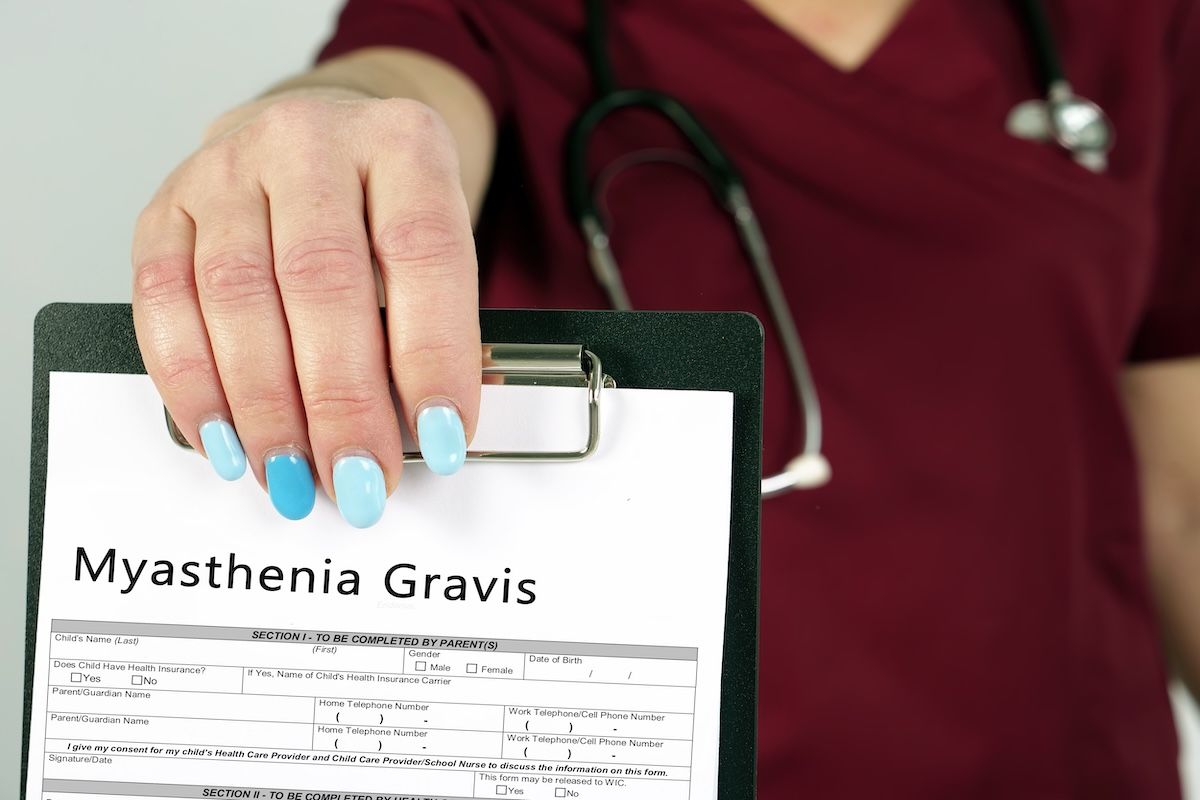- Center on Health Equity & Access
- Clinical
- Health Care Cost
- Health Care Delivery
- Insurance
- Policy
- Technology
- Value-Based Care
Manual Push Delivery of Rozanolixizumab for gMG Preferred by Patients
Patients successfully self-administer rozanolixizumab for generalized myasthenia gravis (gmG), preferring manual push delivery over infusion pumps in a phase 3 trial.
Self-administration of rozanolixizumab, a neonatal Fc receptor blocker (FcRn) indicated for generalized myasthenia gravis, was not only 100% successfully self-administered subcutaneously in a new study, but patients preferred the manual push method of medication delivery, according to the results published in Journal of Neurology.1
Of the 55 patients included in this analysis, 28 were randomized to infusion pump then manual push administration (sequence 1) and 27 were randomized to manual push then infusion pump administration (sequence 2). The FcRn rozanolixizumab was evaluated for efficacy and safety through once-weekly dosing, which included a 6-week training period and two 6-week self-administration periods. These data came from the phase 3 MG0020 trial (NCT05681715).
Successful self-administration, the primary end point, was measured at weeks 12 and 18 by a health care professional (HCP). Secondary end points were treatment-emergent adverse events, changes from baseline in total immunoglobulin G (IgG) and Myasthenia Gravis Activities of Daily Living (MG-ADL) score, and patients’ administration method preference.
The mean (SD) patient age was 53.3 years (15.7), 56.5% of the study population was female, mean body mass index was 27.7 (5.4) kg/m2, 88.7% of the study population was of White race, mean (SD) age at initial diagnosis was 45.8 (18.3) years, 24.2% had a history of myasthenic crisis, and the most common Myasthenia Gravis Foundation of America disease classes were class IIIa (33.9%) and class IIa (27.4%).
“Infusion pump and manual push methods are 2 potential options that allow self-administration of subcutaneous infusions by patients,” study authors wrote. “Whilst both methods provide independence from administration by HCPs, the manual push method is simpler, more cost-effective, requires less equipment, and is expected to reduce infusion times.”2,3
In this study, a preference for self-administration vs from an HCP was seen in 63.6%, with 45.5% also preferring the manual push method vs 30.9% who preferred the infusion pump. Image Credit: © Yurii Kibalnik-stock.adobe.com

Overall, 77.4% of the entire population were exposed to the medication for the entire study period. Their median infusion duration was 5 minutes (range, 1-30) for manual push and 12 minutes (range, 8-30) for the infusion pump. Not only was there a 100% success rate for both methods of self-administration, but this was seen over all study visits, which took place either at the patient’s home or at the study site.
Three-quarters of the patients (75.8%) received 1 or more doses of the study medication, and most of their treatment-emergent adverse events (TEAEs) were mild (83.6%), with comparable incidence rates seen for both treatment sequences. Headache was most common, followed by confirmed COVID-19, pyrexia, diarrhea, and nasopharyngitis, at 21.0%, 11.3%, 9.7%, and 8.1% for both, respectively. Of these, 11.3% were considered serious, and 3.2% resulted in worsening of the patient’s myasthenia gravis. The study authors pointed out that most of the reported headaches were seen during the 6-week training period, but that this was consistent with rozanolixizumab safety data.4
In addition, TEAEs were usually seen early on in the training period and all had resolved by the end of the study evaluation period. There also were no injection-site reactions reported or medication errors linked to adverse reactions. Only 4 patients had to stop treatment with rozanolixizumab during the study, and this was due to metastatic lung cancer, worsening of myasthenia gravis, migraine, and pyrexia and headache (1 patient each).
For the sequence 1 cohort, the median maximum change from baseline in total IgG was 74.6%, and for the sequence 2 cohort, 75.6%. As measured by at least a 2-point improvement from baseline in MG-ADL score, most patients had experienced clinically meaningful improvement. The mean changes from baseline were –5.0 in sequence 1 and –3.0 in sequence 2.
A preference for self-administration vs from an HCP was seen in 63.6%, with 45.5% also preferring the manual push method vs 30.9% who preferred the infusion pump; 74.5% also preferred home administration.
The authors cited 2 main limitations on their findings. There was a small patient population and a short treatment period, “which may not have been sufficient to evaluate patients’ long-term preferences and treatment satisfaction.”
Despite these, the safety, pharmacodynamics, and clinical data they saw were consistent with known previous information on rozanolixizumab and support the 2 methods evaluated here: self-administration and manual push.
References
- Bril V, Antozzi C, Berkowicz, et al. Self-administration of rozanolixizumab via manual push and infusion pump methods in patients with generalised myasthenia gravis: a randomised, phase 3, open-label, crossover study. J Neurol. 2025;272(10):686. doi:10.1007/s00415-025-13420-6
- Bienvenu B, Cozon G, Mataix Y, et al. Rapid push vs pump-infused subcutaneous immunoglobulin treatment: a randomized crossover study of quality of life in primary immunodeficiency patients. J Clin Immunol. 2018;38(4):503-512. doi:10.1007/s10875-018-0507-x 21
- Cowan J, Bonagura VR, Lugar PL, et al. Safety and tolerability of manual push administration of subcutaneous IgPro20 at high infusion rates in patients with primary immunodeficiency: findings from the manual push administration cohort of the HILO study. J Clin Immunol. 2021;41(1):66-75. doi:10.1007/ s10875-020-00876-6
- Rystiggo (rozanalixizumab-noli). Prescription information. UCB; 2024. Accessed October 17, 2025. https://www.rystiggohcp.com/pdf/dosing-and-administration-guide.pdf
